Electricity and Magnetism Collection
Welcome to the electricity and magnetism collection at Aberystwyth University Physics Museum. Here you will find a number of pieces of experimental equipment, previously used to explore the strange properties of electricity and magnetism.
This collection is split into seven sections:
- Arc Lamps
- Current Electricity
- Dynamo's and Motors
- Electrometers
- Electrostatics
- Galvanometers
- Magnetometers
ARC LAMPS
Jablochoff’s Candle
Circa 1895
Two carbon rods are used to suspend an arc of electricity. The carbon on this piece is broken.
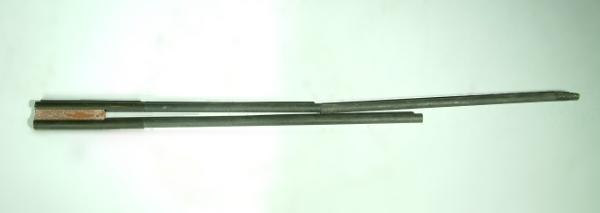
Scissor Type Automatic Arc
Circa 1900
A scissor-type automatic arc for a projection lantern. This piece appears to be home made from recycled materials.
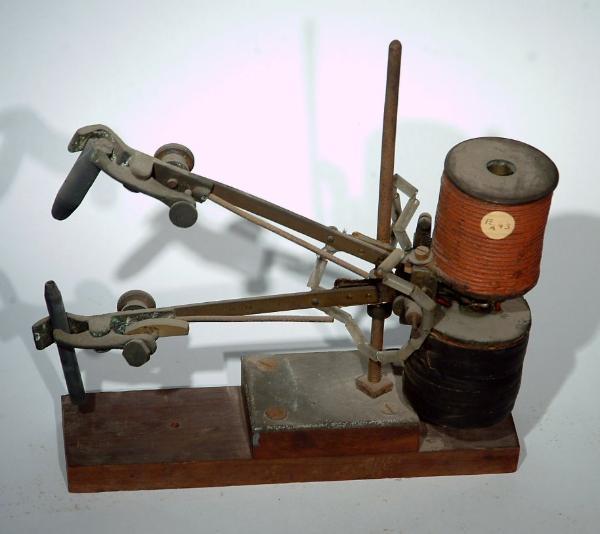
CURRENT ELECTRICITY
Lord Kelvin’s Patent Electric Balance No. 70
By Kelvin and White Ltd, 1895
Used to measure large D.C currents. The current being measured is passed through parallel wire coils allowing more current to be applied when compared to parallel straight wires. The repulsive forces between the coils causes a small mass to move along a horizontal scale. The distance the mass moves is proportional to the square of the current.

Electric Balance Apparatus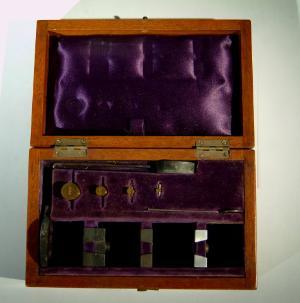
By Kelvin and White Ltd. 1895
A selection of weights and lenses for use with Lord Kelvin’s Patent Electric Balance.
Induction Coil
Induction coils are transformers and are used generate a high voltage output current from a low voltage input. This piece has previously been used in the Physics Lab.
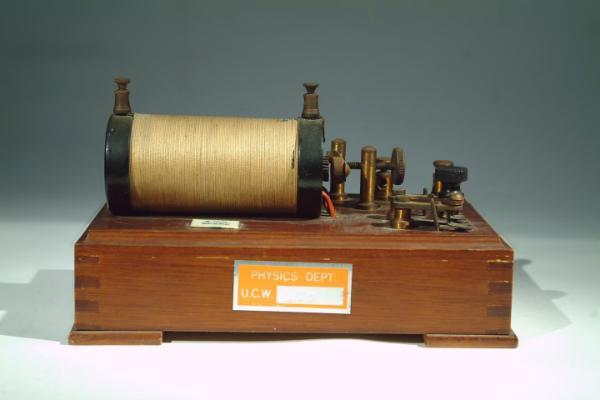
Conductor in Stator Winding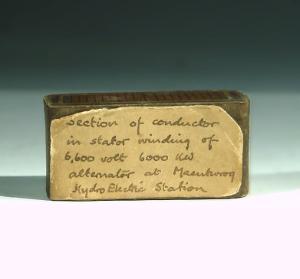
From Maentwrog Hydro-electric Station, 1920
A metal piece labelled ‘Section of conductor in stator winding of 6,600 volt alternator at Maentwrog Hydro Electric Station.'
Dry Voltaic Pile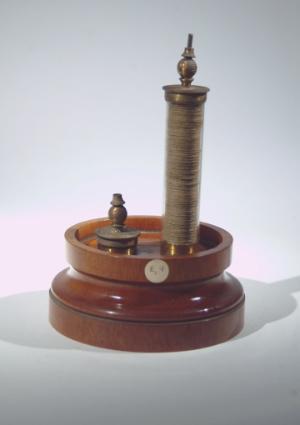
Circa 1890
Voltaic piles were the first form of electric batteries used to provide a continuous current to an electric circuit. This piece is missing half of the pile.
Loaded Cable Paperweight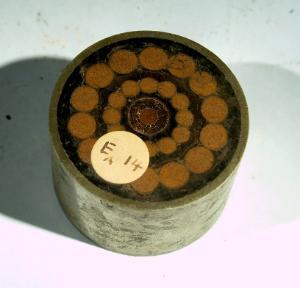
By B. Davies, 1910
A portion of loaded cable mounted as a paperweight. From the B. Davies collection.
Loaded Cable
By B. Davies, 1910
A portion of a loaded cable. From the B. Davies Collection.

Siemens Electrodynamometer No. 1670
By Siemens Bros. & Co. London. 1890
This is an early instrument for measuring power in both A.C and D.C. Two coils at right angles to each other have a current passed through them. This produces a torque which is dependent on the square of the current.
Wheatstone’s Bridge
By The American Electric Speciality Co., New York. 1899
Wheatstone’s bridge, otherwise known as a direct reading ohmmeter, is a piece of apparatus used to measure electrical resistance. These instruments are known for providing very accurate measurements.

Electrolysis of Water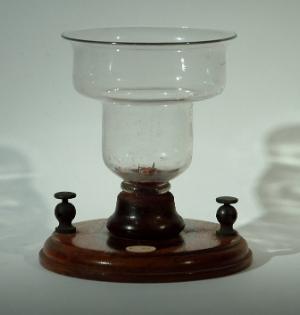
Circa 1880
A device consisting of a glass vase with two electrodes, built to show the decomposition of water into hydrogen and oxygen. Likely used in lecture demonstrations.
Effects of Electric Current
Circa 1880
A coil with a balanced magnet, built for ‘demonstrating magnetic effects of a current’. Possibly used for lecture demonstrations.
Induction Coil
By Gebr Ruhstrat, Gottingen. 1900
Induction coils are transformers and are used generate a high voltage output current from a low voltage input.
Type BK24 Ignitron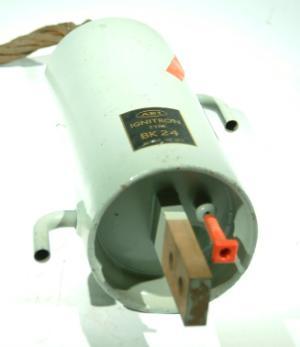
By AEI.
Ignitrons are rectifiers that use a mercury cathode to be able to carry a large current. These devices are widely used in industry to convert large amounts of AC current to DC.
Vacuum Tube No. 555 80 Br 2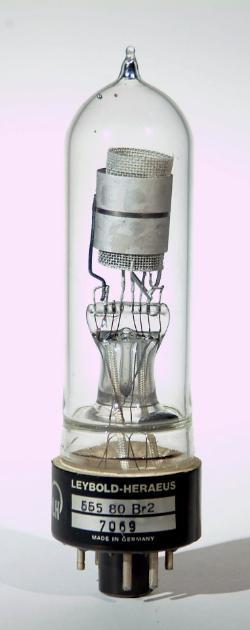
By Leybold-Heraeus.
This is a triode vacuum tube used to control the current between electrodes in a vacuum by a process call thermionic emission.
DYNAMOS AND MOTORS
D. C Dynamo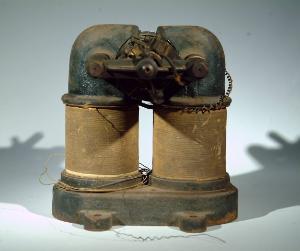
Circa 1895
A small early compound-wound dynamo with horse-shoe field magnet, rocking brushes and brass commutator.
Hand-Driven Demonstration Dynamo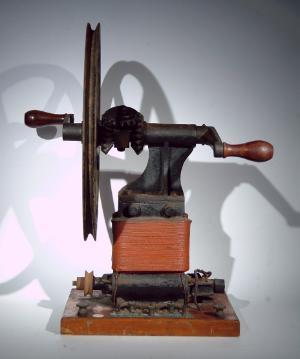
Circa 1900
A dynamo with H-armature and horse-shoe field. This item was borrowed by B. Davies when living at Abermad during the years 1939-1945 and was used to charge an accumulator for use with a wireless receiver.
Model Electric Motor
This piece was used to demonstrate how an electric motor can power a pump. Purchased from St. David’s College, Lampeter, 1945.
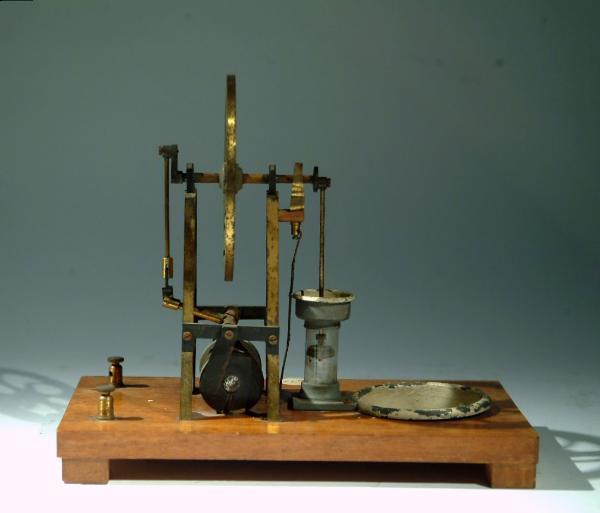
Gramme Machine
By U. C. W. Workshop. 1900
Gramme ring D. C motor with double horse field and rocking cooper gauze brushes. Appears to have been made in the Universities workshop.
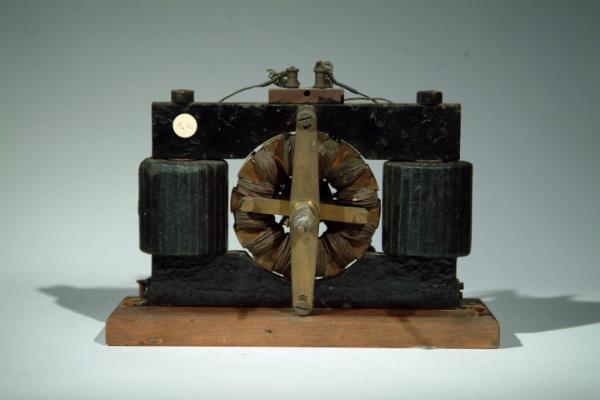
D. C Motor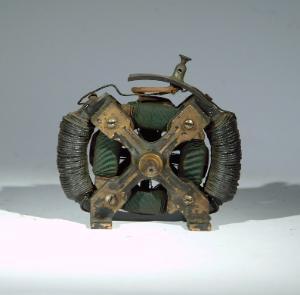
By Cuttriss and Co. 1895
Similar in principal to a Gramme motor with an elaborate armature and rocking copper gauze brushes.
Model Electric Motor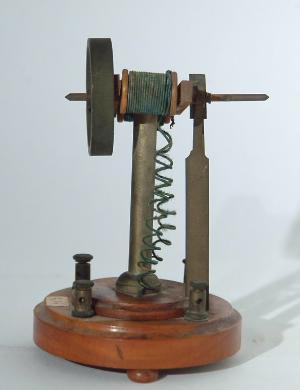
Formerly the property of Prof. F. W. Rudler, this piece was used as a demonstration model for an electric motor.
Demonstration Motor
By Muirhead and Co., Westminster. 1900
A demonstration motor for showing the characteristics of series and short circuits.

ELECTROMETERS
Quadrant Electrometer
By W. G. Pye, Cambridge, 1930
An electrometer of the Dolezalek type used to measure electric charge and potential difference. Previously used in the Honours Lab up to 1955.


Early Quadrant Electrometer in Case
By Elliot Bros. London, 1890
An early version of a quadrant electrometer, used to measure current and potential difference. In case, covered by tinfoil-lined glass shade.
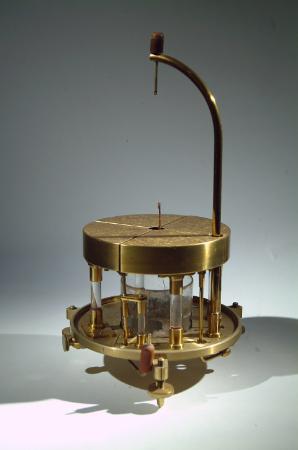
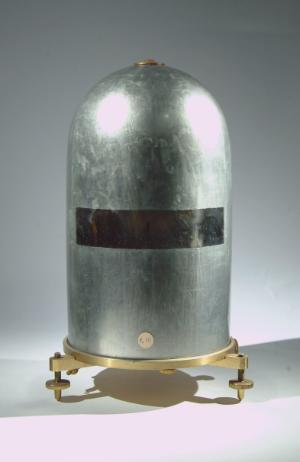
Quadrant Electrometer
By J. White, Glasgow, 1890
A quadrant electrometer of the Kelvin type, with a small electrostatic machine and concentrated sulphuric acid (H2SO4) to keep the humidity inside the electrometer low.
ELECTROSTATICS
Silver Leaf Electroscope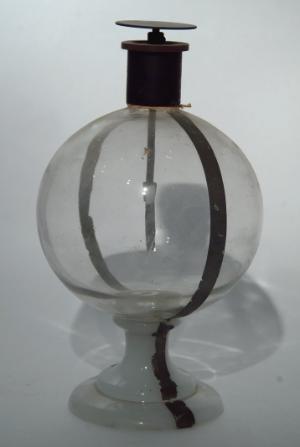
Unmarked
Used for demonstrating electrostatic induction and to test the charge on the object. If the object is charged, the silver leaves will repel and move away from each other when the object is brought toward the disk terminal.
Electroscope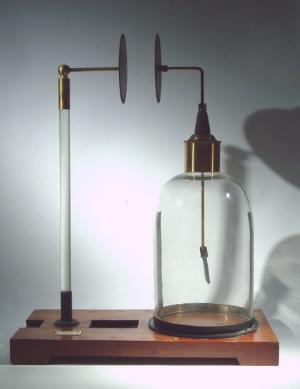
By Harvey and Peak.
This electroscope works similar to the one above. The metal plate on the glass rod is charged and is brought close to the plate that's connected to the silver leave, this causes the leaves to repel.
Pitch Ball Electroscope Figures
Circa 1900
An assortment of objects used to demonstrate electrostatic induction on a Pith-ball electroscope.

Leyden Jar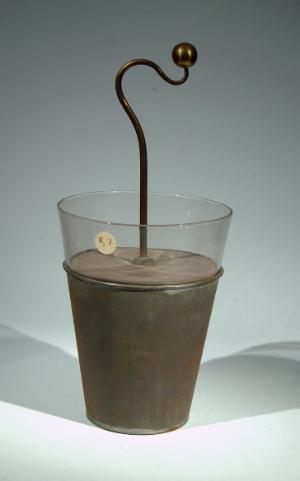
Circa 1890
Layden jars are used to store static electricity between two electrodes, used to show “energy resides in dielectric”.
Voss Machine
By F. E. Becker, 1870
An electrostatic induction device where an insulated dielectric is charged and induces an opposite charge on an insulated conductor. Driving handle and pulley are missing.
Purchased from St. David’s College, Lampeter, 1944.
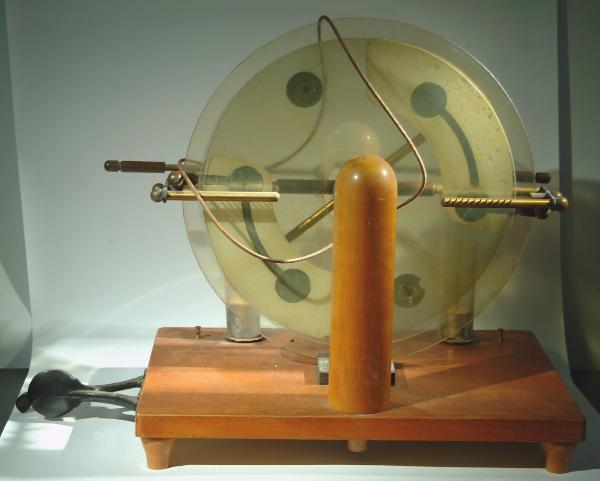
Glass Cylinder Electrostatic Machine
By William and Samuel Jones, No.135 Holborn, London, 1790
A large piece of apparatus made by the famous Jones brothers of London. This piece includes a stand, electrical chimes, quadrant electroscope, head of hair and discharging tongs.
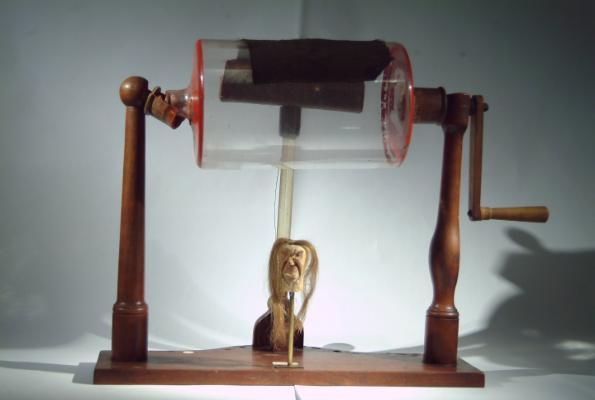
Coulomb Torsion Balance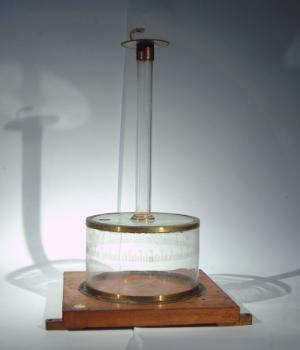
Circa 1890
Used for measuring weak forces such as the electrostatic force between charges. One was famously used by Coulomb to establish Coulombs Law.
Ayrton-Mather Electrostatic Voltmeter
By Robt. W. Paul, London.
This voltmeter is similar to a quadrant electrometer and uses a beam of light, reflected off a mirror as its needle. It could measure AC and DC voltages up to 10 Volts.
GALVANOMETERS
Thompson Mirror Galvanometer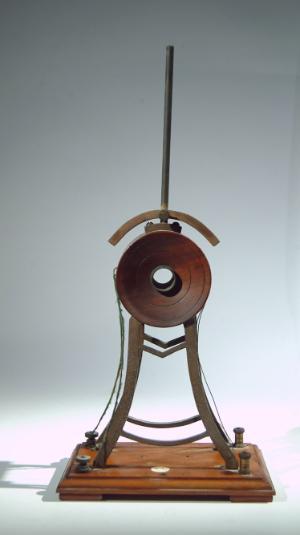
By W. Thomson, 1858Developed to measure variations in the current of long cable. A small mirror with a magnet on its back, is suspended within an air pocked inside a long copper coil. Light is shone onto the mirror and reflected onto a screen/scale. When a current passes through the coil, inducing a magnetic field, the mirror rotates in proportion to the current. This deflection can then be seen on the screen.
Moving Magnet Reflecting Galvanometer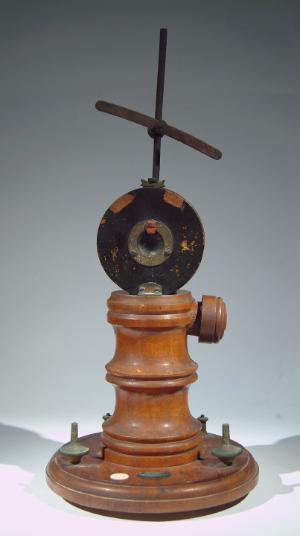
Made in U. C. W. Workshop, 1900
Galvanometer for detection and measurement of current, with provision for damping vane.
Galvanometer Parts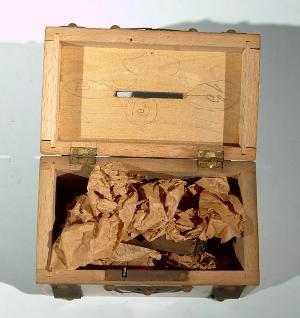
Parts for use in a galvanometer. From B. Davies collection.
Tangent Galvanometer No. 5657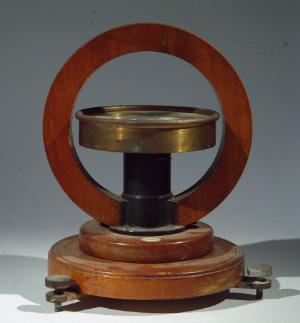
By W. G. Pye.
This is a sensitive galvanometer. It is set-up with the needle pointing magnetic north-south and parallel with the coil. When a current is passed through the coil, the magnetic field produced causes the needle to deflect. The tangent of this angle is then proportional to the current in the coil.
Unipivot Versatile Galvanometer No. L318966
By Cambridge Instrument Co. Ltd.
Unipivot galvanometers were a step-up from the traditional moving coil designs. Here the circular oil is pivoted on a spike about its centre of gravity, such that movements to not disturb the needle.
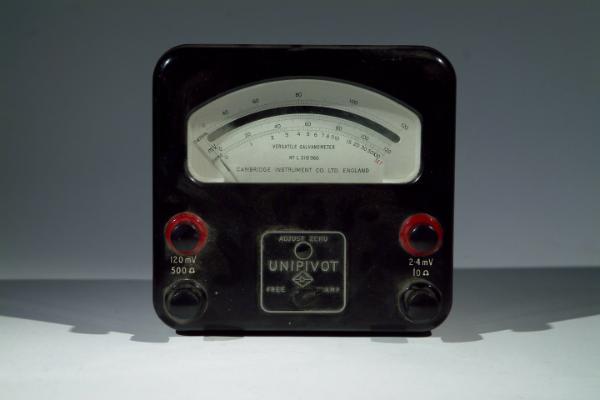
Reflecting Moving-magnet Galvanometer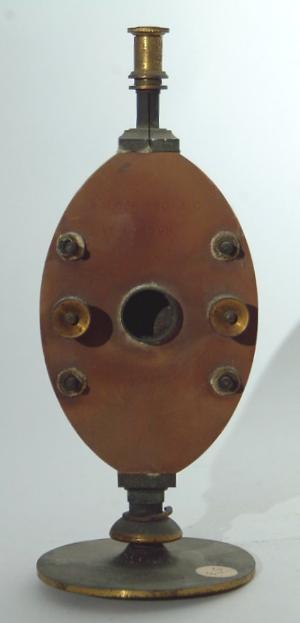
By Nalder Bros., 1900
A small galvanometer by Nalder. Missing some parts.
Reflecting Astatic Galvanometer
Circa 1900
A reflecting astatic galvanometer with no markings. From the B. Davies collection.

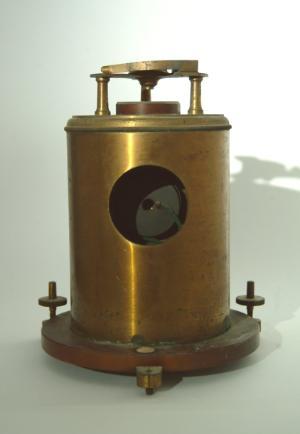
Moving Magnet Reflecting Galvanometer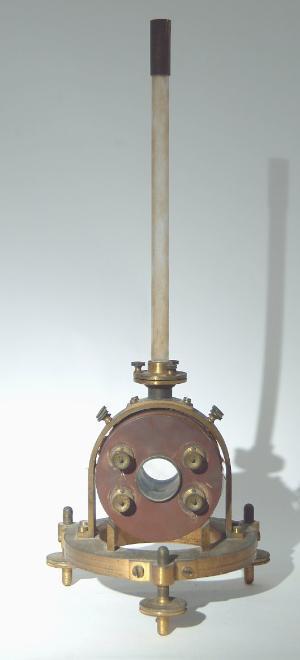
By Cambridge Scientific Instrument Co., 1890
A moving magnet reflecting galvanometer with a 2 ft. long suspension and elaborate adjustments.
Broca Galvanometers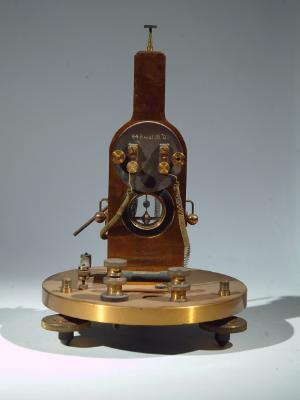
By Cambridge Instrument Co., 1910
Astatic type, Broca galvanometers. There are two in the collection.
D'Arsonval-Deprez Galvanometer
By T. Carpentier, Paris, 1890
This galvanometer design allows the scale to be linear as the current through the coil is proportional to its angular deflection. The glass case is damaged.
Astatic Galvanometer
By Horne & Thornthwaite.
Astatic galvanometers were more accurate than previous designs as they eliminated the effect that the Earth’s magnetic field had on the galvanometers needle.
Mirror Galvanometer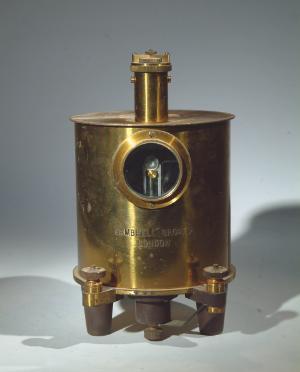
By Gambrell Bros.
This piece was previously used in the Physics Lab. It is quite an elaborate design and may have been used to carry out very precise measurements.
Mirror Galvanometer
By Gambrell Bros.
This piece was previously used in the Physics Lab. It is quite an elaborate design and may have been used to carry out very precise measurements. Glass screen is chipped and damaged.
Moving-Coil Galvanometer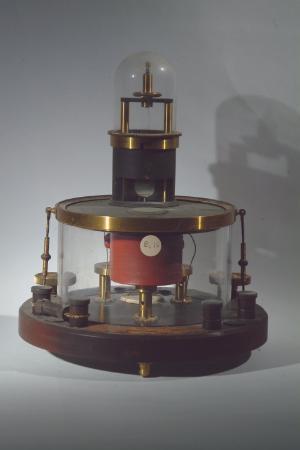
By Hartmann and Braun, Frankfurt, 1910
This is a very sensitive instrument for the measuring of small currents of the order of 10-9 Amps. This piece allows weights to be added to adjust the sensitivity.
Astatic Galvanometer in Case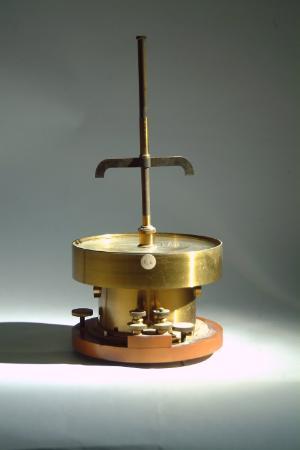
By Elliott Bros. 1900
Astatic galvanometer with shunts. An improvement upon the simple galvanometer as this apparatus eliminated the effect of the Earth’s magnetic field on the needle.
From B. Davies Collection.
Ayrton-Mather Galvanometer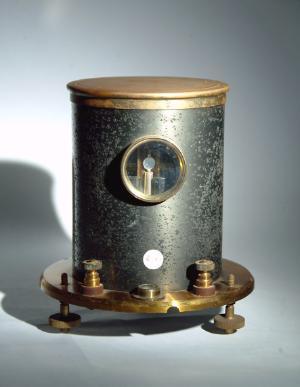
By Robt. W. Paul, London, 1920
This is an extremely sensitive instrument due to the shape of the coil giving it a low moment of inertia. This galvanometer comes complete with case.
Moving-Coil Galvanometer with Electromagnetic Field
By E. D., U. C. W. Physics Lab, 1900
This galvanometer was produced by Aberystwyth University Physics Lab around 1900. It is marked E. D on the bottom.
Campbell Vibration Galvanometer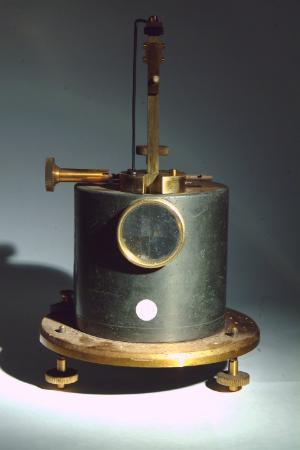
By Robt. W. Paul, London, 1920
In this piece of apparatus, the mirror is suspended by a vibrating wire, which is then tuned to a resonance frequency. When the current is applied, the wire deflects and the mirror moves. The string vibration allows this instrument to be very sensitive.
DC Range Box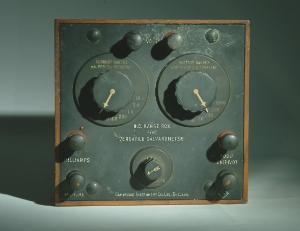
By Cambridge Instrument Co.
DC range box for versatile galvanometer originally designed for use with a 500 Ohm Unipivot galvanometer. Previously used in the Honours Lab.
Admiralty Pattern 5946 Integrator A/S 91
By R. B. Pullin. 1939This piece houses a suspension galvanometer for the detection of submarines and in oceanographic work.
MAGNETOMETERS
Moving Magnet Reflecting Magnetometer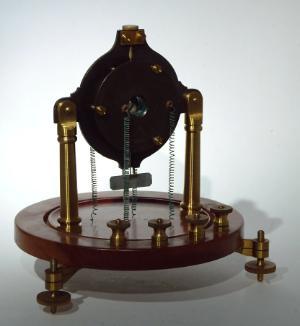
By W. Groves, London
A sensitive instrument used to measure electric current. When an electric current is introduced into the magnetic coil, the induced magnetic field causes the magnet on the back of the mirror to deflect and rotate in proportion to the current. When light is reflected off the mirror, the deflection due to the current can be seen and measured.
Deflection Magnetometer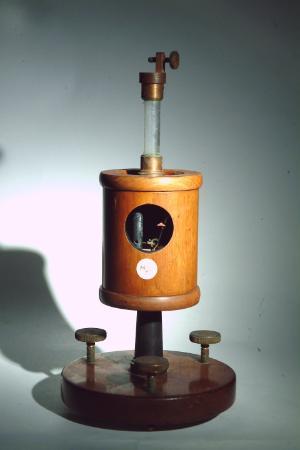
By Hartmann and Braun, Frankfurt, 1910
Apparatus used to measure magnetization, strength, direction and change of magnetic field in a magnetic material.
